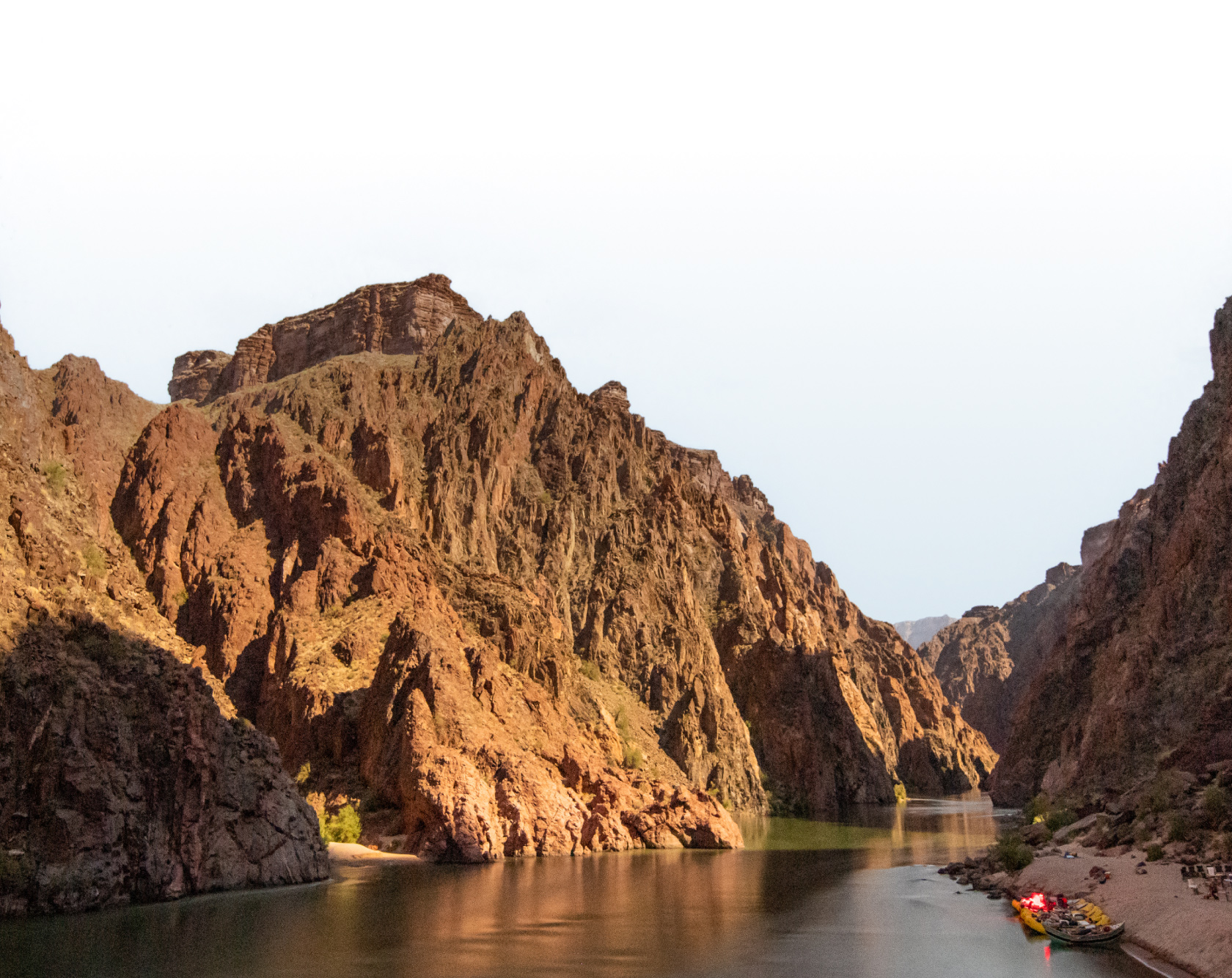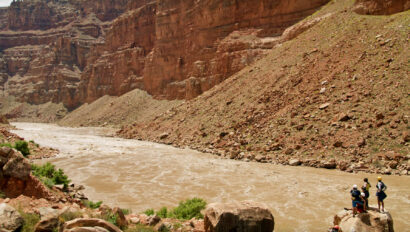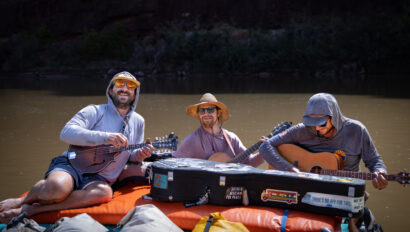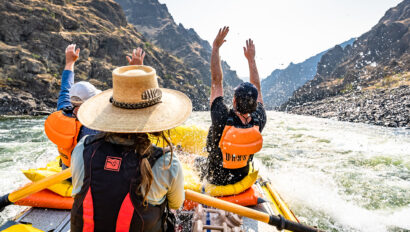Nightscapes in Cataract Canyon: Stars with Lars

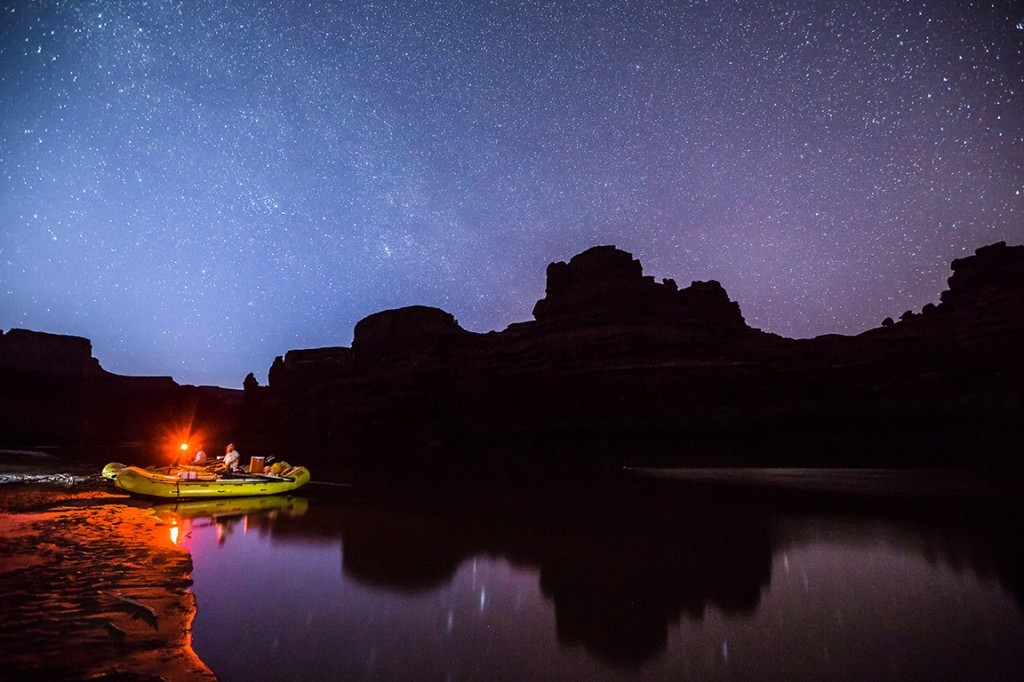
We met our trip leader Lars in a hotel lobby in sporty Moab, Utah, where he briefed us on the coming week’s adventure. He said the first 52 miles we’d float down the Colorado River without a rapid, not a riffle. This would give us time to decompress, to learn to pee in the river—“Dilution is the solution to pollution,” he would say over and over during our six-day, five-night Cataract Canyon rafting trip in Canyonlands National Park—and to perfect sealing our dry bags before we hit the Class III and IV rapids on day three.
With that, the tall, lanky Lars doled out red, white, and yellow dry bags and gave us instructions—fold flap A over B, roll down, give it a good shake, and snap. This would ensure their contents would stay dry in case our raft flipped in a rapid.
And since late summer is the rainy season on the river, Lars’ most pertinent advice for this trip was, “Cross your fingers and hope there are no clouds at night.” Because this trip was billed as Stars with Lars,* I would learn that Lars could read the night sky as well as he read the river’s rapids. But I wouldn’t discover that for a few nights.
I have a thing for stars—not that I know a thing about them. On clear nights from my home in Hawaii, I can point out the Big Dipper, Orion’s Belt, and the Milky Way. Things get murky after that. Constellations are like hieroglyphics to me: indecipherable. What fascinates me is how stars, seemingly so far away, draw our world together. From the highest peak, the lowest valley, across countries and continents, we all see the same stars as they cycle through our nights and months and years. Throughout millennia, civilizations have gazed at stars, drawn insight from them, and created stories about them. Some people read the night sky for directions the way I read a map. As I write this, a team of navigators from Hawaii is sailing around the world with no GPS, no compass, no sextant—nothing but the stars to guide them.
But it does take a clear, dark sky to see these exploding balls of gas, and it helps to get away from the competing lights of development. Canyonlands National Park was perfect for this.
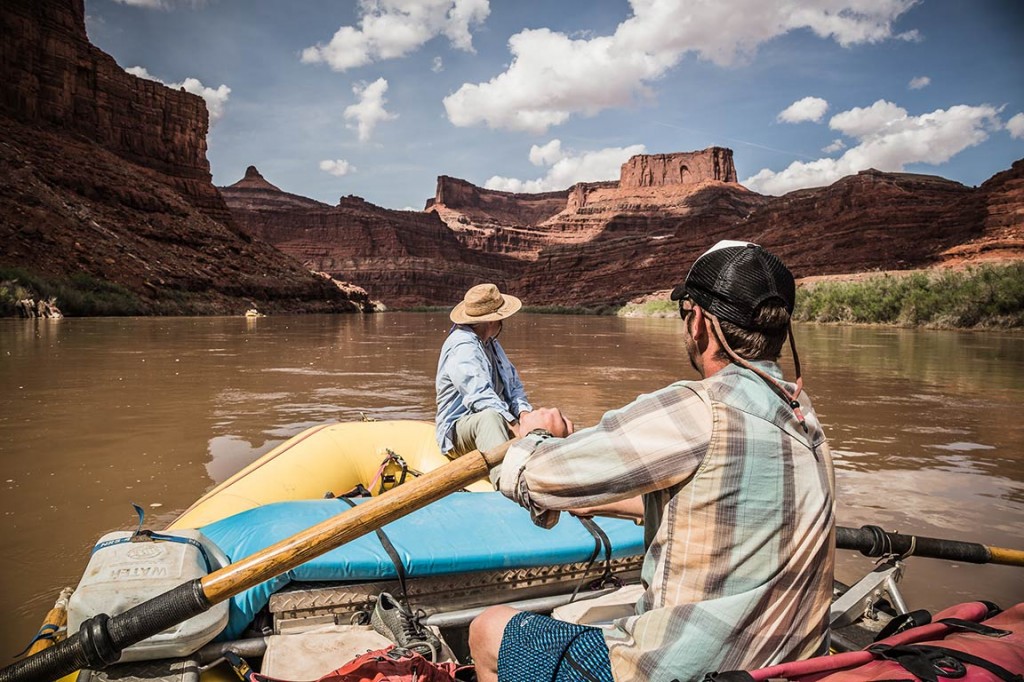
There were 13 of us guests on this trip: a family of four from London; a retired couple from Southern California; a pair of BFFs and ex-pats from Holland; three solo women travelers; and my husband and me. Plus, four guides.
I think Lars wore the same yellow visor the entire time. Along with a goatee, the hat did a fair job of keeping the hot, desert sun off his face. A button-down, striped shirt, loose at the cuffs, protected his arms and body. With his painted toenails—black—he didn’t exactly embody my image of a river guide. He even wore more jewelry than I did. On our first night, after instructions on hand washing, plate washing, and the bathroom setup known as, “the groover,” a marching stream of thunderheads curtained the sky, and instead of a star talk, Lars read poetry.
On our second night, after a dinner of spaghetti and hot brownies straight from a Dutch oven, we identified the Big Dipper and followed its spout to the North Star. Lars pointed out the Summer Triangle anchored by Altair, Deneb, and Vega; the W-shaped Cassiopeia; and the constellation of Sagittarius. And, then, the clouds moved in.
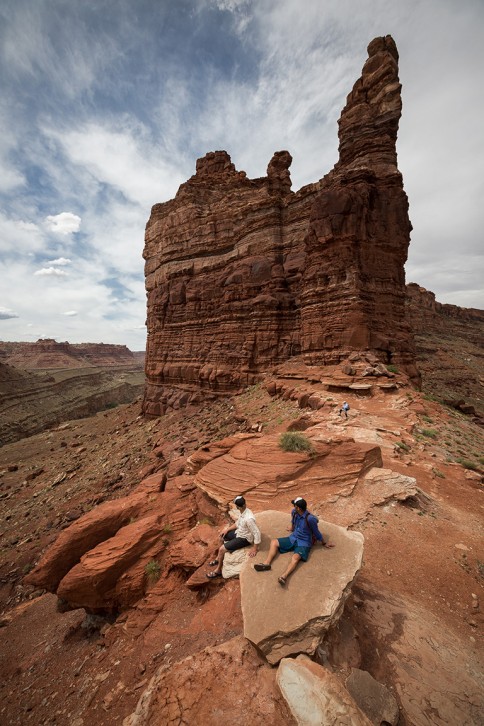
The next two nights proved too cloudy for star watching, but clouds didn’t mean Lars wasn’t sharing an encyclopedic body of knowledge with us. As we floated down the river, we craned our necks to see 300-million-year-old limestone and shale deposits. We took walks to see 185-million-year-old petrified wood and hikes to see the unusual geologic formations called hoodoos. Along the way, Lars taught us about cryptobiotic soil, a knobby, black crust of cyanobacteria, one of the oldest life forms on Earth, and he spotted fossils in the sand and dirt and rock the way my husband finds seashells on the beach. This long-dead creature, he said, may have lived during the time dinosaurs roamed the area.
Time may not have been on our passenger list, but it paddled alongside us as we snaked our way down the river to Lake Powell. By the time we boarded our six-passenger Cessna aircrafts to retreat the 96 miles back to Moab—a trip that took us six days on a raft and 35 minutes in a plane—time had ceased to exist. Had we been on the river six days? Six weeks? Six hours? For me, amidst talk of hundreds-of-millions-of-year-old rock and wood and soil, time had come to a full stop. Lars called it “river time.”
Our last night proved to be the pay-off, as if Lars had orchestrated the whole thing that way. He set up a telescope, so we could see the rings around Saturn. Lying on our backs on Rockfall Beach, we watched as Antares led the constellation of Scorpio into view, framed by a slot in the canyon downriver.
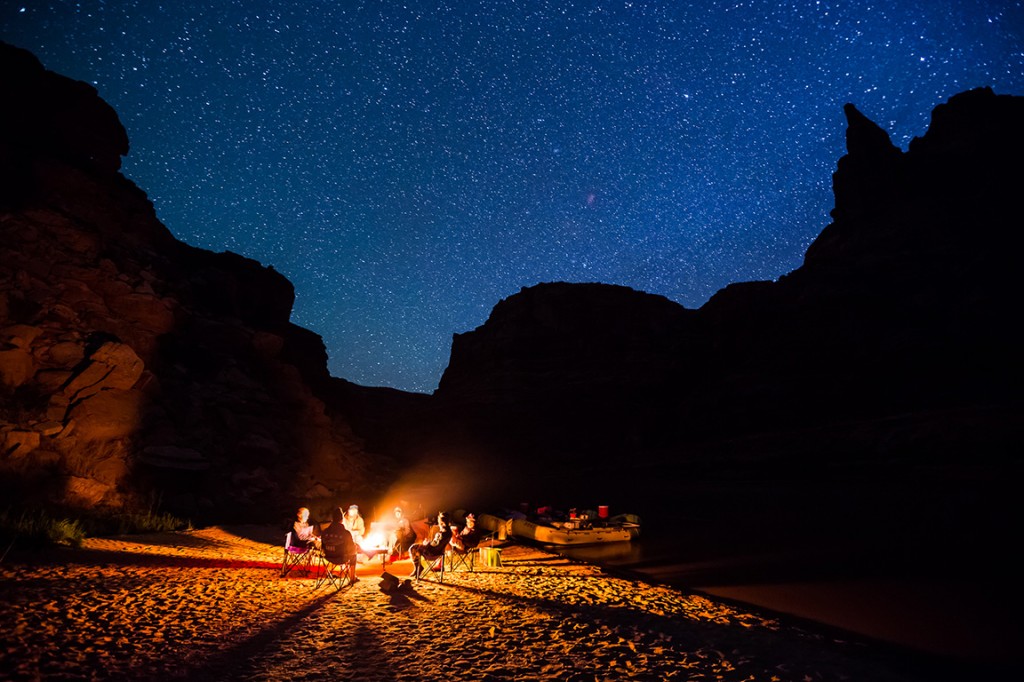
The entire constellation of Ursa Major emerged like a photograph in a light room, and we identified the three stars in the Big Dipper’s handle and learned there are really four. Lars had a way of sharing relatable information. For the retired eye doctor in our group, Lars shared that the bright star in the Dipper’s handle, Mizar, had a companion, Alcor, and the distinction of the two was a sort of 20/20 eye test in ancient Greece and the Middle East.
For me, coming from an island in the Pacific Ocean, there was Delphinus. Like all constellations, there are many stories about Delphinus, but the one I liked goes that the Greek poet Arion was saved at sea by a dolphin.
The night’s grand finale delighted everyone—the Perseid meteor showers. They hadn’t reached their peak yet, but the streaking meteors served as a fitting end to an enlightening and enlivening week.
We slept without a rainfly that night, the sky so bright with stars that their after-image appeared on my retinas long after I closed my eyes. To this day, even.
* In 2020, Lars Haarr took over management of our Grand Canyon operation in Flagstaff, AZ. In lieu of “Stars with Lars” departures, we now offer Stars & Guitars astronomy trips.
Related Posts
Sign up for Our Newsletter
